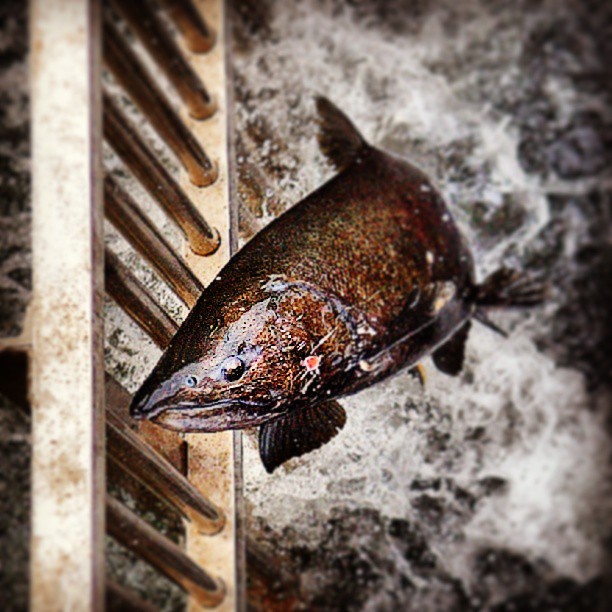The upriver salmon run is one of nature’s great migrations. Each year mature salmon make the long journey back to their natal river to reproduce, just once. For the five species of Pacific salmon (Chinook, chum, coho, pink, and sockeye), this arduous journey is a race against the clock that ends in a fleeting romance and ultimately death.
The answer to why they die, it turns out, hinges on a problem every animal on Earth has had to solve.
“Every kind of organism has evolved to solve the problem of balancing how much energy to put into surviving to first reproduction and how much energy to put into surviving to reproduce repeatedly,” said Steve Lindley, the director of NOAA’s Fisheries Ecology Division.
“Salmon are one of the extreme cases where they put everything into reproducing just once, and then getting old and dying almost immediately thereafter (a common strategy among insects but much less so for vertebrates).”
The reason for this, Lindley suggested, has to do with the difficult upriver migration salmon make back to their own spawning location. Flipping their bodies in the air and hurling themselves against the downward flowing water is no easy feat and one that is energetically exhausting. Because of this, salmon must fully develop in the ocean and build up fat reserves. Once they enter the river there is little food to eat and they stop investing in the maintenance of their bodies.
“The proximate reasons have to do with DNA switches,” Lindley said. “Essentially many of the activities that operate in immature salmon to allow them to maintain their health, grow and mature are turned off after maturation, and without maintenance they pretty rapidly ‘fall apart’.”
An alternative for these salmon species would be to spend more time in the ocean, accumulating food and energy so they are then able to migrate back after spawning. But this increases their risk of dying before getting the chance to spawn and for Pacific salmon, this is a risk too great.
From BayNature.org >>>

